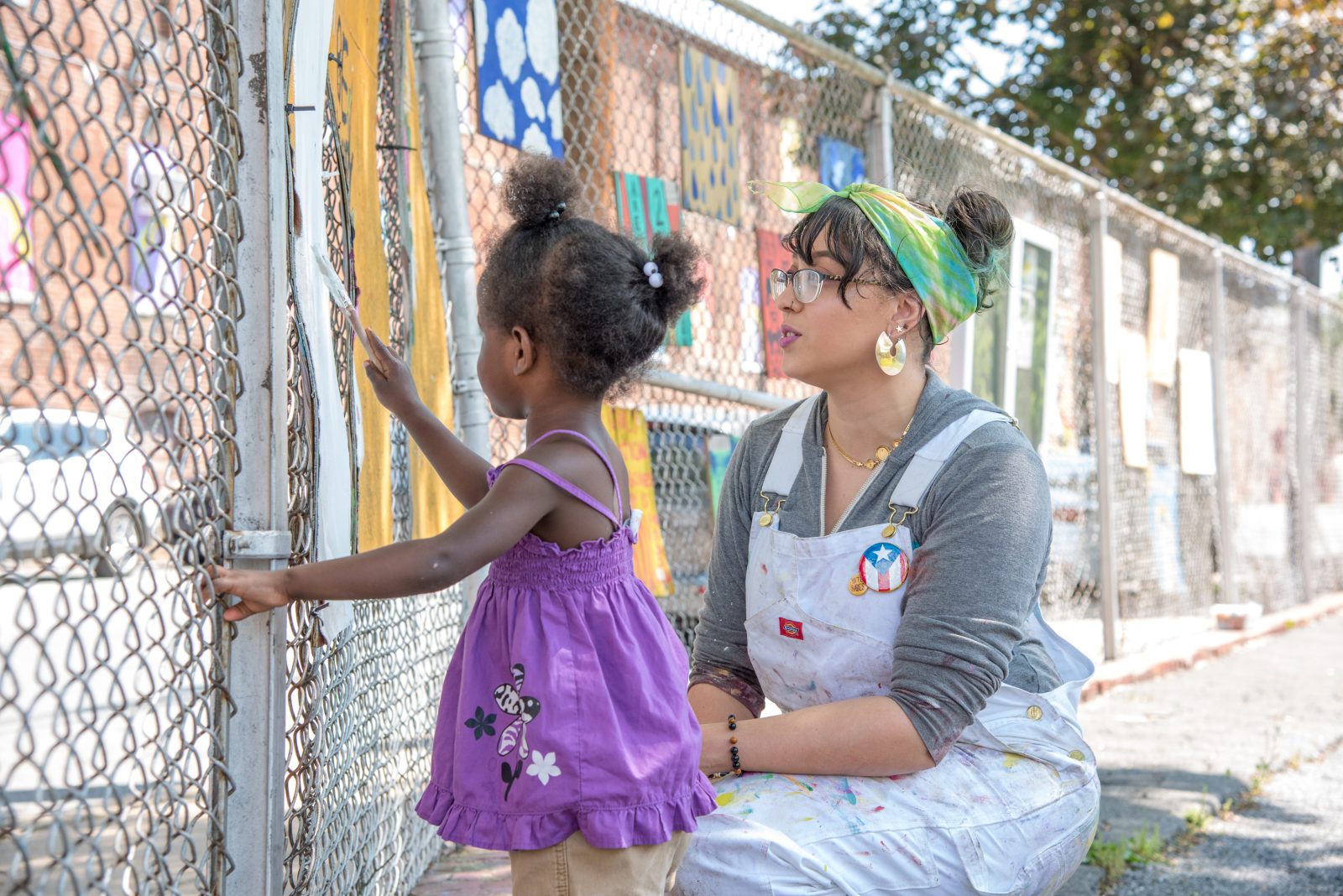
Meet Salina Almanzar | Design Thinking Methodology Instructor
Friday, January 10th, 2020
So……what is Design Thinking? We could lay out all the academic definitions, but instead we sat down to chat with Salina Almanzar who will be teaching it in PCA&D’s Continuing Educationprogram this winter.
Salina is originally from the Bronx but was raised in Lancaster, PA, where she grew up in the Southeast section of Lancaster City. She currently lives in the Northwest section of Lancaster but will soon be moving to the Southwest. Salina is a Franklin & Marshall College graduate (double major in English Literature and Studio Art) and completed the Arts Administration and Museum Leadership Masters program at Drexel University, where her thesis focused on on Creative Placekeeping and acts of belonging in the Latinx community in Lancaster City. In the Summer of 2019 she completed an Intensive Design Thinking course at d.school at Stanford University. We asked Salina about these experiences and how they informed the curriculum she created for the Design Thinking Methodology course.
Tell us about how your experiences have shaped the course you are teaching?
SA: My experience with the Arts Administration program and my experience as a community-based artist and organizer were a big primer to design thinking as a way of creating work for and by the people. Going through d.school helped put a language and container around all of these pieces of my educational and artistic career and I’m so excited to share this!
What do you do professionally?
SA: I wear many hats. I am primarily a visual artist and community-based artist. This means that I have two practices. One is my personal practice that looks at histories of colonization and decolonization of the Caribbean and how that relates to me and my family/ancestors. My family is from Puerto Rico and the Dominican Republic. I feel like I’m from all of these places in different ways, and they inform my practice as an artist and, especially, as a community-based artist.
My “public” practice deals with creating spaces for creativity in the public. I have facilitated a program called Art Pop for the past two years at Culliton Park. Art Pop is a pop-up arts and crafts program that brings free opportunities to make in the public sphere. My guiding questions with Art Pop revolve on creative future visioning — meaning, I am often asking folks in the community to imagine what they want to see their community look like in the future and recall what they remember from the past. We’re often talking about resilience and power: how communities, and especially historically marginalized communities, can use their resources, knowledge, and expertise to realize the futures they want to see. We usually do this through painting, drawing, mind-mapping, and other projects that require moments of collaboration.

For my “bread-and-butter” I work at Franklin & Marshall College as a Photo and Printmaking Tech as well as coordinate programs between the Art and Art History Department and other departments or community organizations as they come up. This year I will be co-teaching a design thinking course at F&M and I’m also an Adjunct Professor in the Arts Administration and Museum Leadership program at Drexel University.
Tell us a little about more your Design Thinking Methodology class at PCA&D:
SA: I am interested in talking about the process of design thinking as a way to facilitate community engagement and enhance a creative practice. We will learn by doing in this course (a key Design Thinking principle!) and we will get busy practicing thinking BIG.

Design Thinking is a method of creative problem solving that encourages thoughtful questioning and analysis to find innovative solutions. Often, design thinking is used to talk about products, goods, or services. We think of designing for consumers, however, I think that design thinking at its core is about the heart or is human-centered. We will spend the first half of our meeting time really diving into each of the human-centered steps in the design thinking pedagogy and will have a few surprises sprinkled in the end.
I am really excited about the whole idea of learning by doing. As a visual artist I learn best when I can get my hands dirty. I’m also partial to the ways that design thinking principles force us to get uncomfortable. Leading with empathy and leading with interaction are so important and help us break down silos we can find ourselves in. I’m really excited to help folks learn to be empathetic designers of the world around them.
I think it is important to know that many of the principles seem simple but require some unlearning. Meaning: we are often taught to be individualistic but design thinking requires radical collaboration and teamwork. I also think it is important to know that there are many, many ways design thinking is taught or discussed depending on what field or what area of interest a person is working in. This course is more specifically about engaging with the public/community and using creative processes to discover solutions or possibilities to problems/issues. We will be talking to strangers and playing together. We will have fun!
What do you do for fun when you’re not teaching/working?
SA: I am a bookworm! I like to read and write in my free time. I also love playing Minecraft. It’s my favorite video game because I can build new worlds and fight monsters. It’s such a simple design and you can do so much with it. I’m interested in how I might be able to integrate my love of Minecraft with design thinking in the future. Hmmmm.
